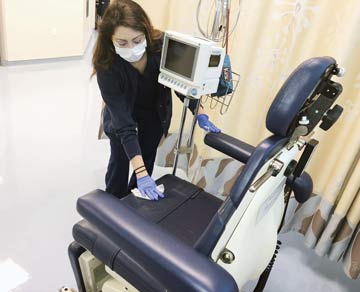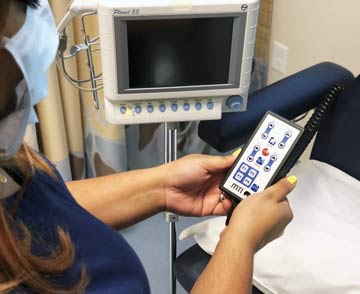Our boutique ophthalmic surgery center caters to cataract patients who pay out of pocket for premium lenses and expect a higher level of comfort and service. We roll out the red carpet when they arrive and then roll them through the facility on their own stretcher chair, a mobile unit that houses an IV pole and racks to hold monitoring equipment and charts. Our two state-of-the-art ORs are outfitted with a femtosecond laser and the latest in phaco technology, but it’s the four stretcher chairs that help drive our success by streamlining patient throughput, improving room turnovers and increasing patient satisfaction.
Upon arrival, patients ease into a stretcher chair parked in pre-op to get their pupils dilated and remain seated as they’re wheeled first to the femtosecond laser room, then to the operating room where phacoemulsification and lens implantation take place, and finally to the last stop in recovery. Keeping patients on the same surface adds to their comfort level and increases their overall satisfaction with the surgical experience. It also eliminates the physical stress and worry of having to transfer patients between a stretcher and procedure tables multiple times during their care. During transport, the chairs are easy for staff to maneuver down halls, around tight corners and into rooms.
Perhaps their best feature is the durable and wireless remote attached to each one that staff use to transform the chairs into recliners and surgical tables. A chair’s remote can be used to make slight adjustments to its configuration on a case-by-case and patient-by-patient basis. We primarily use it to cycle the chair through preprogrammed positions that improve our clinical efficiencies. In pre-op, a nurse punches position “1” on the remote to place the patient in Semi-Fowler’s — seated comfortably with their legs up and head slightly elevated. They recline in comfort as the nurse dilates their pupils, readying them for the journey ahead. When the patient is wheeled into the femtosecond laser suite, a nurse pushes “2” on the remote to recline the patient for positioning at the laser unit.
.svg?sfvrsn=be606e78_3)


.svg?sfvrsn=56b2f850_5)